Abstract
Few studies to date have examined time reallocation in naturalistic, multiresponse human repertoires when one or more responses are restricted. For this experiment, free-operant baseline levels of six responses were measured for four autistic children. The high-probability responses were made unavailable, one at a time, such that subjects had access to five, four, three, and two responses in successive restriction conditions. A return to the six-response free-operant baseline condition completed the experiment. Results were compared to predictions made by four time-reallocation models. These results were described accurately only by the selective substitution model. Further analyses examined alternative explanations for the individual reallocation patterns obtained. An expanded selective substitution definition is proposed that may characterize orderly patterns observed in multiresponse repertoires under restriction conditions more accurately than the other existing models.
Full text
PDF
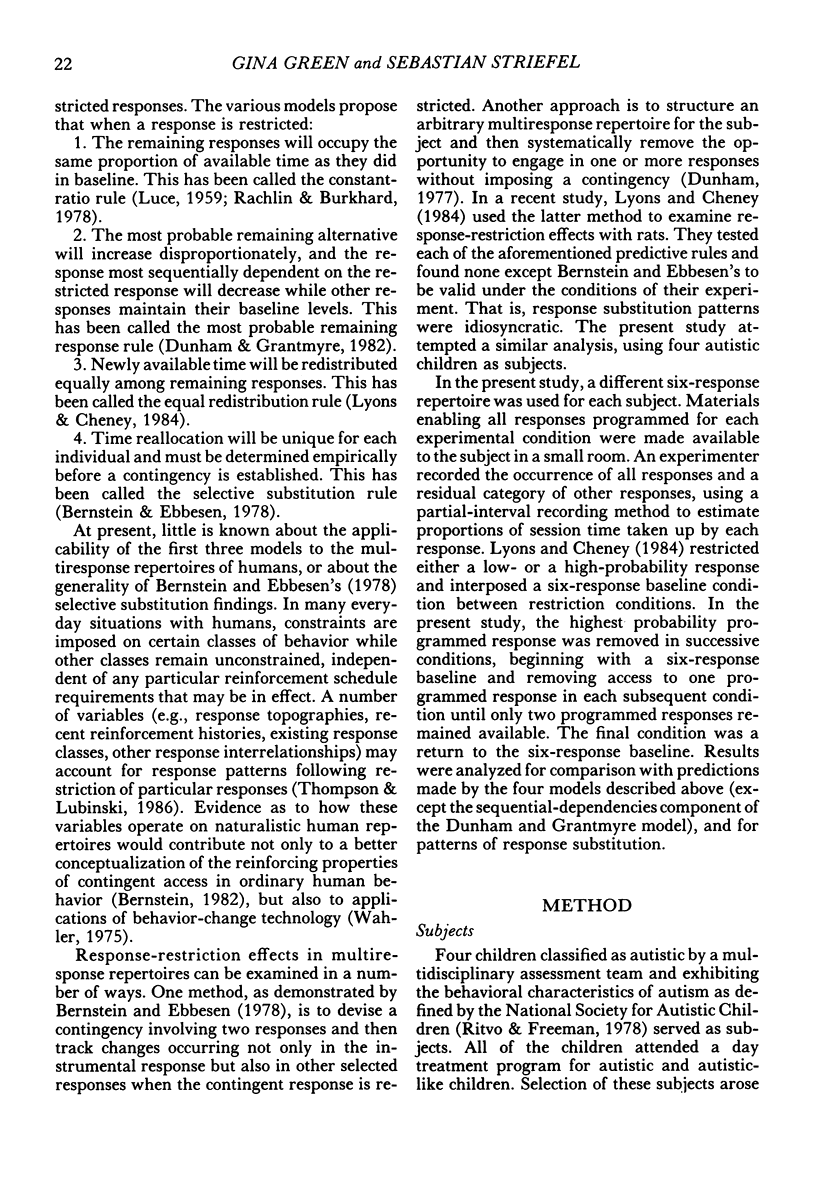


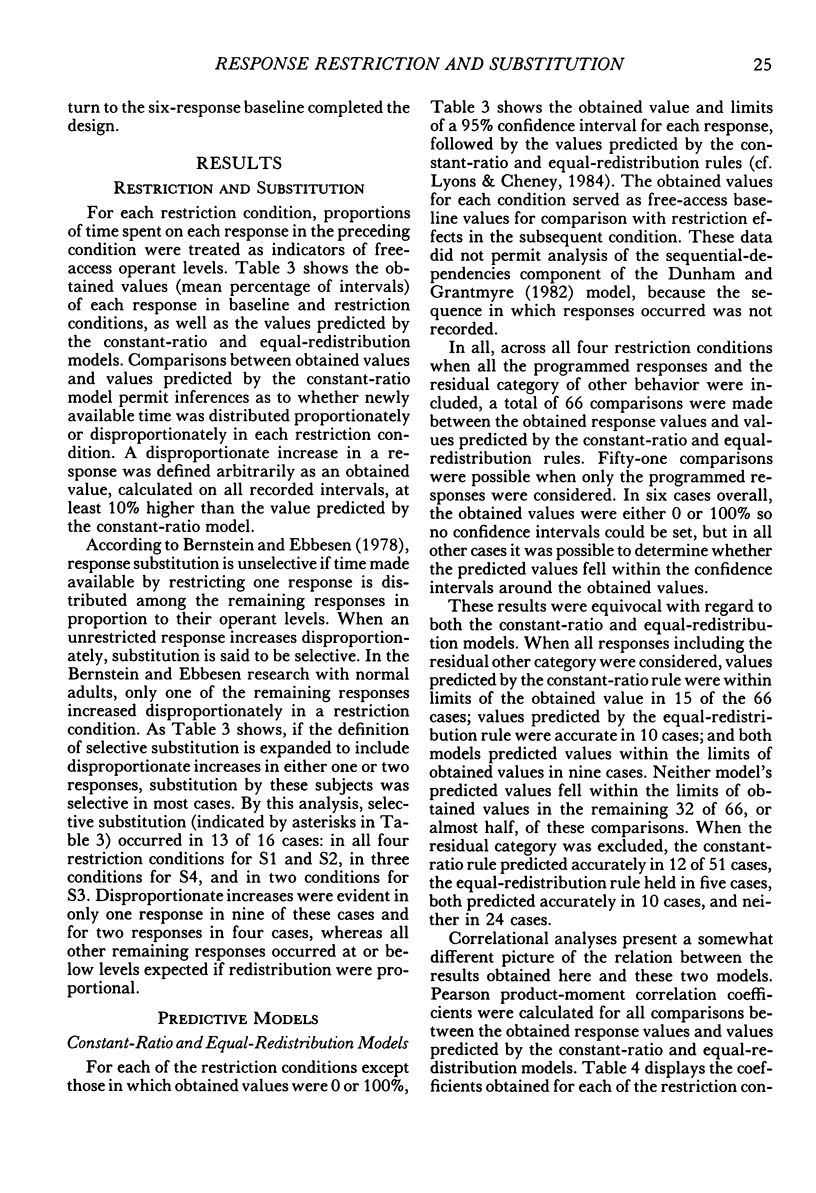
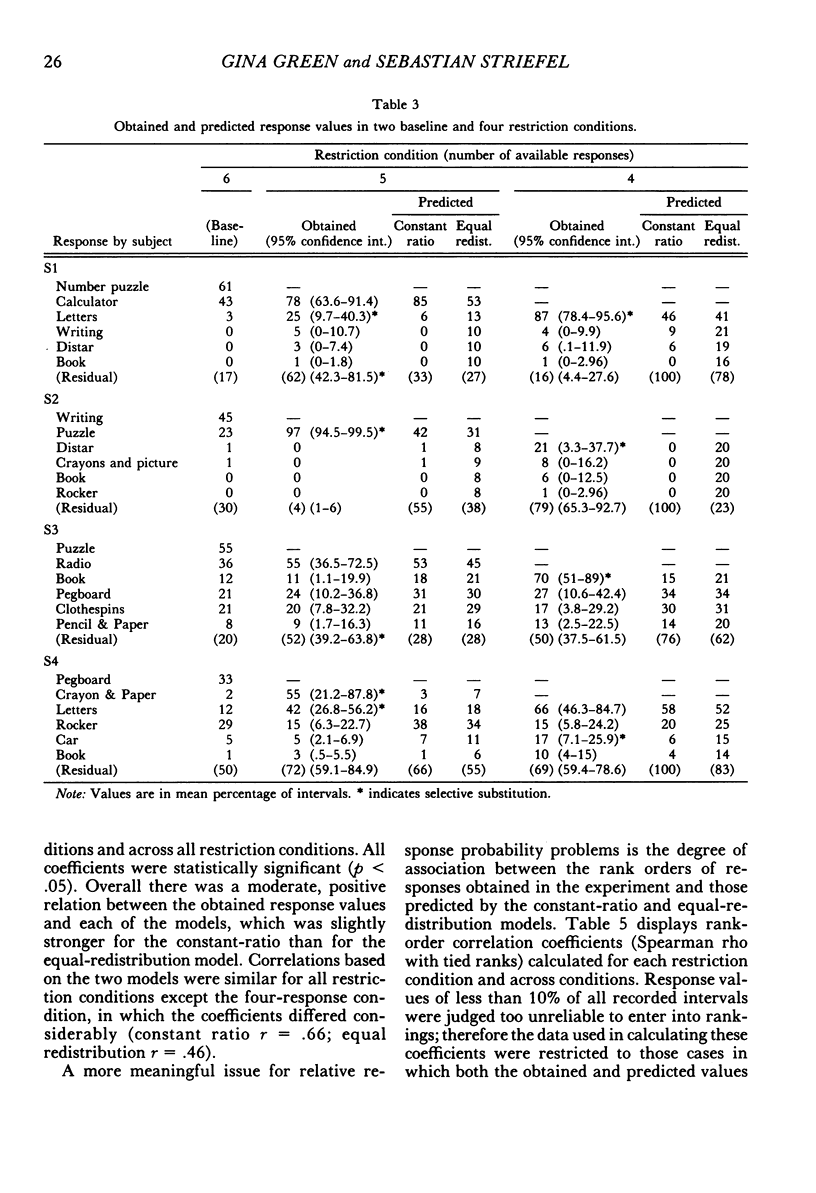
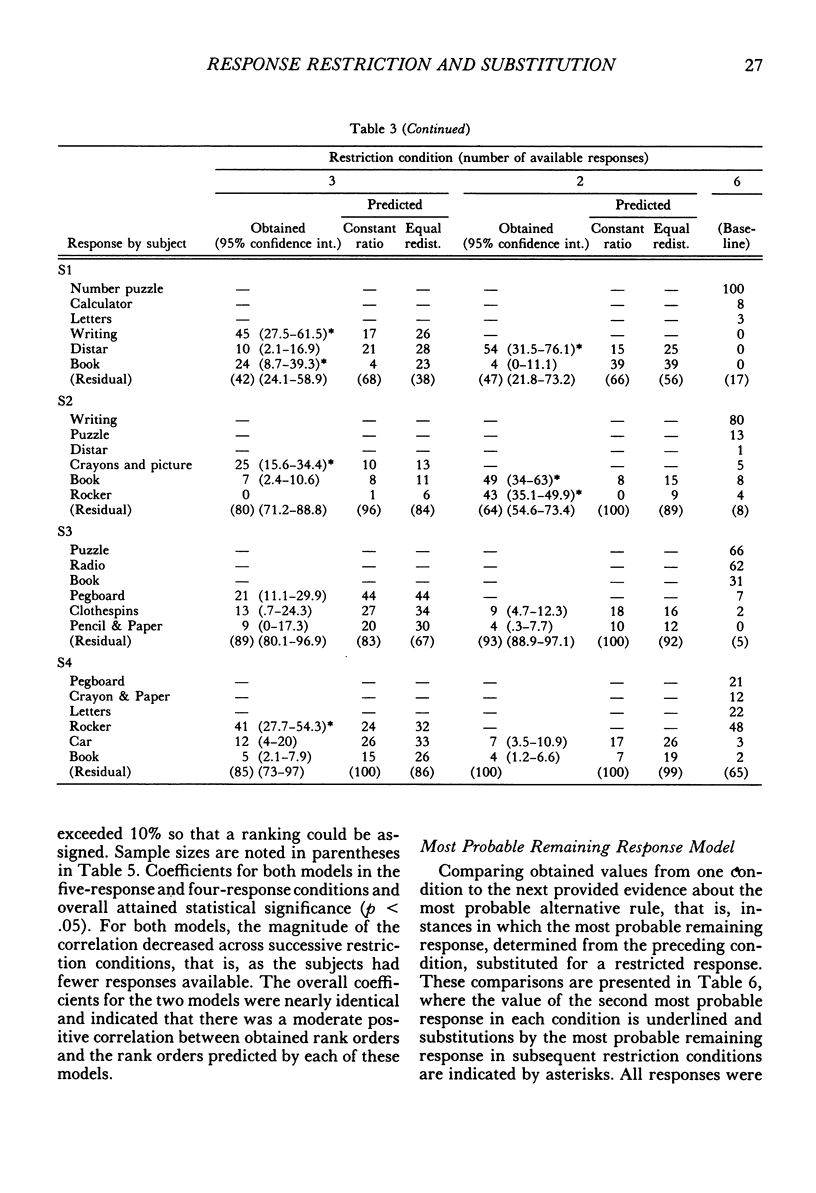
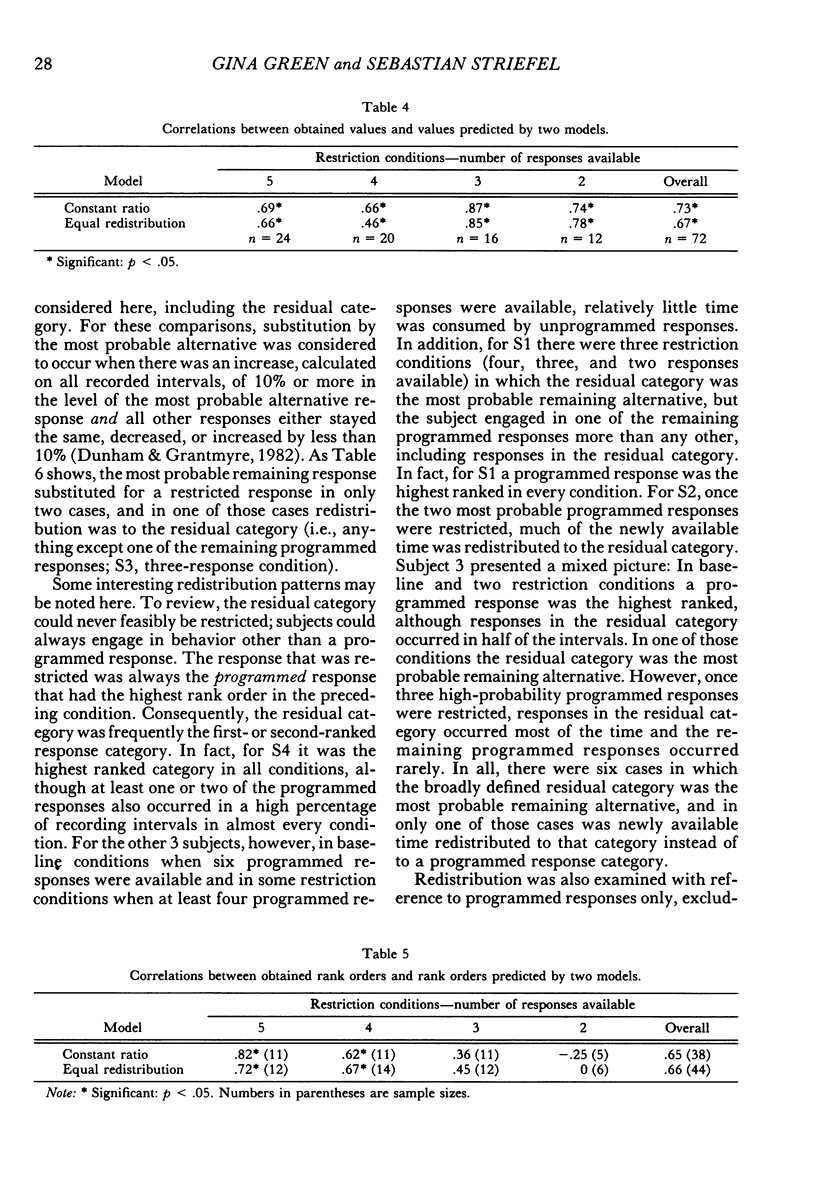


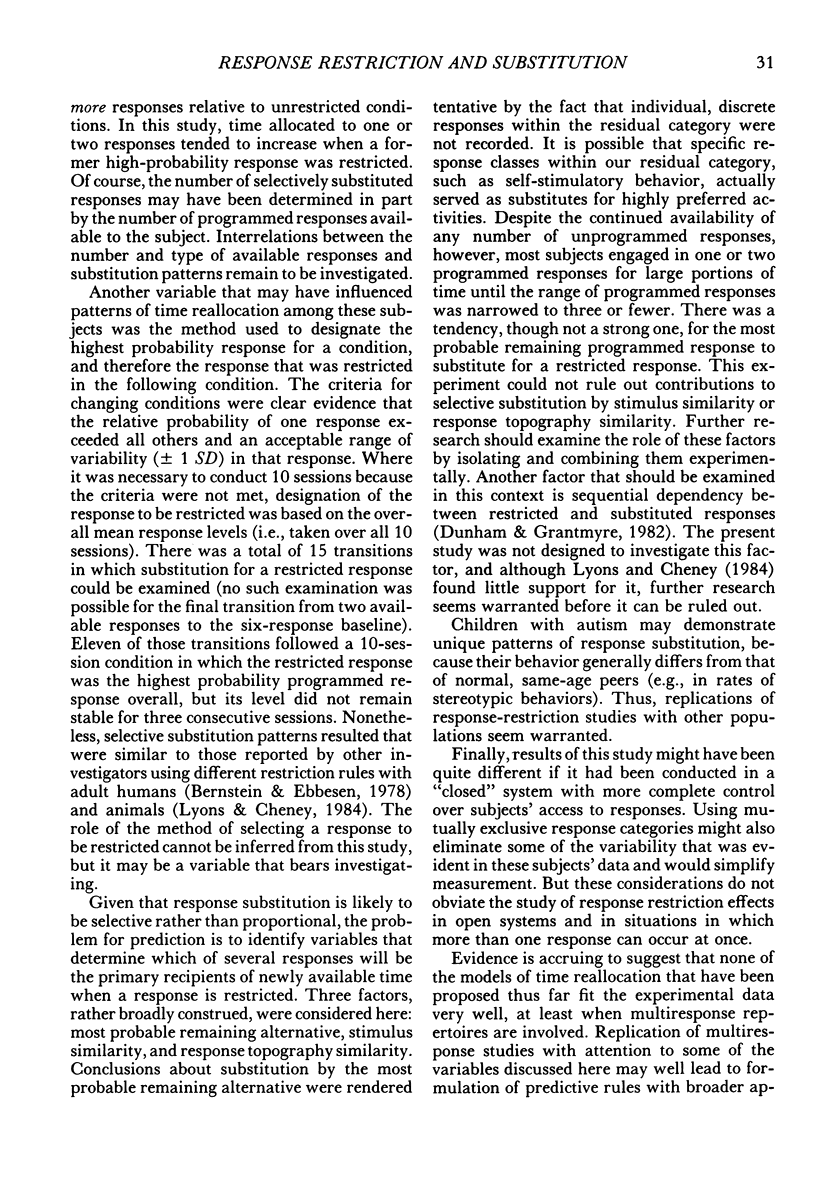
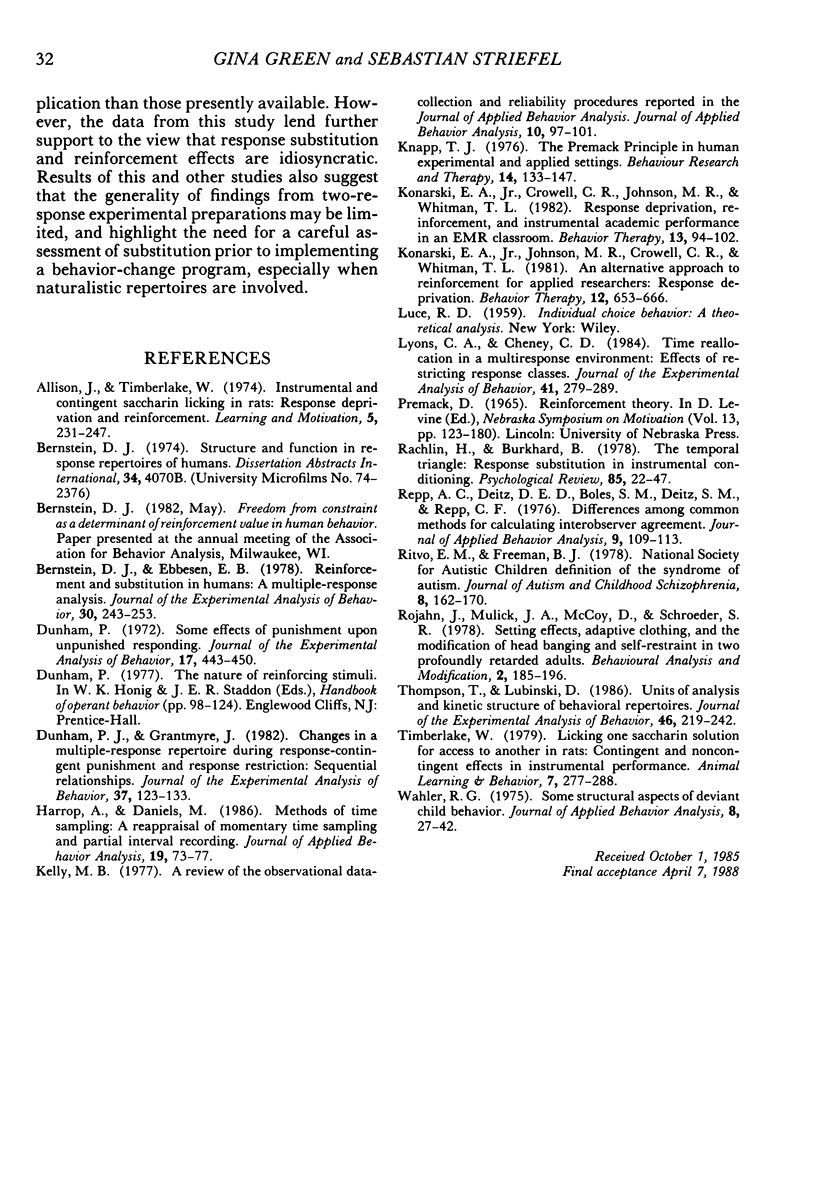
Selected References
These references are in PubMed. This may not be the complete list of references from this article.
- Bernstein D. J., Ebbesen E. B. Reinforcement and substitution in humans: a multiple-response analysis. J Exp Anal Behav. 1978 Nov;30(3):243–253. doi: 10.1901/jeab.1978.30-243. [DOI] [PMC free article] [PubMed] [Google Scholar]
- Dunham P. J., Grantmyre J. Changes in a multiple-response repertoire during response-contingent punishment and response restriction: Sequential relationships. J Exp Anal Behav. 1982 Jan;37(1):123–133. doi: 10.1901/jeab.1982.37-123. [DOI] [PMC free article] [PubMed] [Google Scholar]
- Dunham P. J. Some effects of punishment upon unpunished responding. J Exp Anal Behav. 1972 May;17(3):443–450. doi: 10.1901/jeab.1972.17-443. [DOI] [PMC free article] [PubMed] [Google Scholar]
- Harrop A., Daniels M. Methods of time sampling: A reappraisal of momentary time sampling and partial interval recording. J Appl Behav Anal. 1986 Spring;19(1):73–77. doi: 10.1901/jaba.1986.19-73. [DOI] [PMC free article] [PubMed] [Google Scholar]
- Kelly M. B. A review of the observational data-collection and reliability procedures reported in The Journal of Applied Behavior Analysis. J Appl Behav Anal. 1977 Spring;10(1):97–101. doi: 10.1901/jaba.1977.10-97. [DOI] [PMC free article] [PubMed] [Google Scholar]
- Knapp T. J. The Premack Principle in human experimental and applied settings. Behav Res Ther. 1976;14(2):133–147. doi: 10.1016/0005-7967(76)90067-x. [DOI] [PubMed] [Google Scholar]
- Lyons C. A., Cheney C. D. Time reallocation in a multiresponse environment: Effects of restricting response classes. J Exp Anal Behav. 1984 May;41(3):279–289. doi: 10.1901/jeab.1984.41-279. [DOI] [PMC free article] [PubMed] [Google Scholar]
- National Society for Autistic Children definition of the syndrome of autism. J Autism Child Schizophr. 1978 Jun;8(2):162–169. doi: 10.1007/BF01537864. [DOI] [PubMed] [Google Scholar]
- Repp A. C., Deitz D. E., Boles S. M., Deitz S. M., Repp C. F. Differences among common methods for calculating interobserver agreement. J Appl Behav Anal. 1976 Spring;9(1):109–113. doi: 10.1901/jaba.1976.9-109. [DOI] [PMC free article] [PubMed] [Google Scholar]
- Thompson T., Lubinski D. Units of analysis and kinetic structure of behavioral repertoires. J Exp Anal Behav. 1986 Sep;46(2):219–242. doi: 10.1901/jeab.1986.46-219. [DOI] [PMC free article] [PubMed] [Google Scholar]
- Wahler R. G. Some structural aspects of deviant child behavior. J Appl Behav Anal. 1975 Spring;8(1):27–42. doi: 10.1901/jaba.1975.8-27. [DOI] [PMC free article] [PubMed] [Google Scholar]


